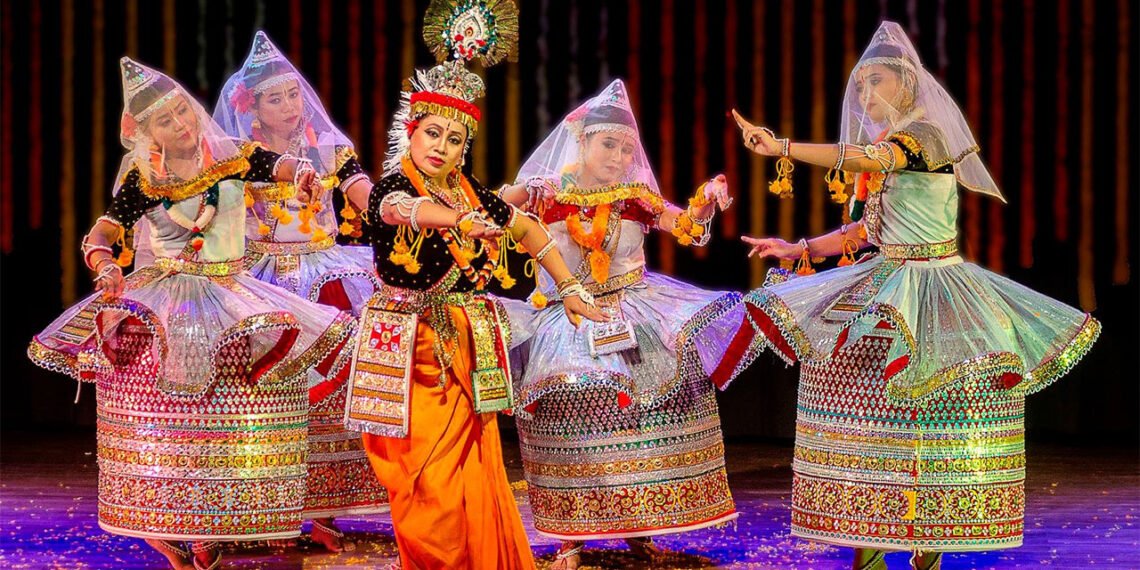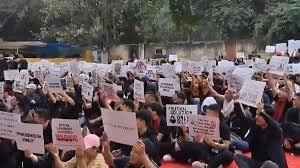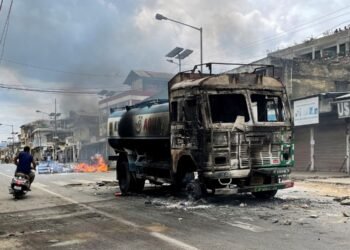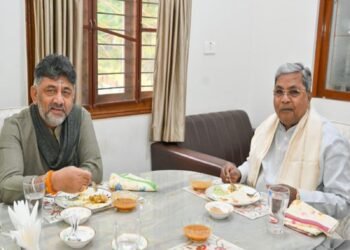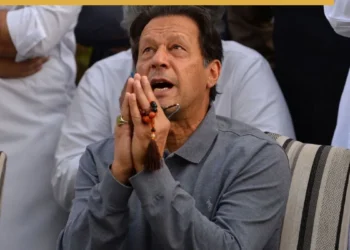Manipur’s journey is one of unrealized dreams, especially in sports, education, and cultural development. While it has produced champions like Mary Kom, the state struggles with ethnic conflict, poor infrastructure, limited opportunities, and a lack of strategic development. Can Manipur rise to the occasion, or will its potential remain just a dream?
BY Navin Upadhyay
Nestled in the northeastern corner of India, Manipur, known as the “Jewel of India,” is a land of breathtaking beauty, cultural richness, and an untapped reservoir of human potential. With its lush landscapes, diverse ethnic communities, and a long history of warrior traditions, the state holds a unique place in the heart of the nation. But despite its enormous promise, Manipur’s full potential remains largely unfulfilled, particularly in the realms of governance, development, and sports.
A Land of Untapped Sporting Talent
Manipur’s contribution to Indian sports is legendary. From the renowned boxer Mary Kom, the pride of the nation, to weightlifting champions like Sanjita Chanu, the state has consistently produced sporting talent that has brought laurels not just to the region, but to India as a whole. However, this immense pool of talent remains underutilized due to systemic issues, lack of infrastructure, and insufficient support from the government and private sectors.
Happy Manipur Statehood Day! 🌺 Celebrating the rich culture, heritage, and natural beauty of this jewel of India. Here’s to the resilience & pride of its people. Wishing Manipur continued progress and prosperity! #ManipurStatehoodDay @NBirenSingh @manipurmygov @Manipur_Tourism pic.twitter.com/PqWBxGt4hP
— NorthEasternCouncil (@NEC_GoI) January 21, 2025
The state has produced many champions in disciplines such as boxing, weightlifting, and football, but the lack of state-of-the-art training facilities and the absence of a cohesive, long-term sports policy have hindered these athletes from reaching their full potential. Manipur’s sports infrastructure is, in many ways, still rudimentary. While the state boasts numerous training academies and grassroots-level initiatives, there is still a significant gap in terms of world-class facilities, medical support, and professional coaching.
ALSO READ: Manipur Crisis: With tourists gone, a state mourns its dead, and counts its losses
For example, Mary Kom’s success came despite having to train in basic conditions and navigate the absence of proper coaching in her early years. Her journey to becoming a six-time world boxing champion and an Olympic medalist was marked by her sheer determination, but how many more such athletes have slipped through the cracks due to inadequate resources and support?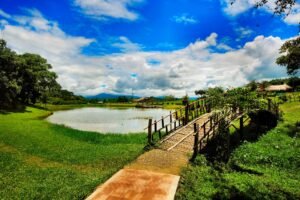
Similarly, in football, Manipur has been a breeding ground for exceptional talent. Several players from the state have represented India in national teams, but the state’s football infrastructure remains underdeveloped, and the sport is not as organized or funded as cricket or hockey. Despite being home to numerous football clubs and teams that regularly produce gifted athletes, the lack of recognition at a national level means that many talented players struggle to make a mark.
Manipuri Thali or Chaluk is an array of culinary treasure that beautifully reflects the state’s rich culture and biodiversity.
Known for its diverse flavors and use of locally sourced ingredients, Manipuri food is a delight for the senses. Vegetarian and Non-Vegetarian, both,… pic.twitter.com/VwyeAbUnQz
— Nongmangkha (@nomangkha) September 10, 2023
The state also excels in traditional sports like polo, and the Manipuri polo game, also known as “Sagol Kangjei,” is recognized as the world’s first form of polo. Yet, despite the global significance of this sport, Manipur’s role in the international sporting world remains muted, limited by a lack of infrastructure and global promotion.
Governance and Political Challenges
Manipur’s political landscape has long been marred by unrest, with ethnic violence, insurgency, and a history of political instability continuing to plague the state. While it has made significant strides in areas like education, healthcare, and infrastructure since its statehood in 1972, the region remains underdeveloped compared to other parts of India. One of the reasons for this is the lack of a focused and coherent policy that is both people-centric and development-oriented.
Ethnic strife, particularly between the Meitei and Kuki communities, has caused tensions in the state, leading to violence, displacement, and a slow process of recovery. The complex social fabric of the region, with various tribes and communities co-existing, requires a nuanced approach to governance that respects the autonomy of these groups while ensuring their development within the larger framework of India. However, a history of neglect from successive governments has compounded these issues, with resources often diverted from critical areas, leaving the people of Manipur to fend for themselves.
The state’s geographical remoteness, its proximity to international borders, and political instability have created an environment where the dreams of the people often remain trapped. A lack of meaningful engagement from the central government has led to alienation, especially among young people who seek better opportunities within and outside of the state.
Education, Infrastructure, and Employment: Gaps That Need Bridging
Manipur has a vibrant education system, with numerous schools and universities producing talented students who have excelled in various fields. However, there is a significant gap in higher education, vocational training, and skill development programs that can empower the state’s youth. The absence of world-class educational institutions in the state means that many young people seek opportunities elsewhere, often at the cost of being disconnected from their roots.
The education system, while improving, still faces challenges in terms of quality, infrastructure, and teacher training. Additionally, there is a lack of job opportunities for graduates and young professionals, forcing many to leave the state in search of better career prospects. While the state government has made efforts to promote entrepreneurship and self-employment, these initiatives are often underfunded and poorly executed, leaving many aspiring young people without the support they need to succeed.
In terms of physical infrastructure, while Manipur has seen improvements in roads and connectivity, it still lags behind many states in terms of transportation, healthcare, and urban planning. The lack of an efficient transportation network, coupled with the state’s isolation, means that access to critical services, markets, and business opportunities is limited.
Moreover, in the wake of ethnic violence and tensions, the state’s ability to rebuild itself has been severely compromised. Thousands of families have been displaced, and the conflict has left scars on the state’s social fabric. Despite efforts by various NGOs, civil society organizations, and government agencies to address these issues, the process of healing and reconstruction is slow, and the promises of peace, development, and stability remain unfulfilled.
The Role of Traditional Culture and Tourism in Economic Development
One area where Manipur holds enormous potential is in the development of its cultural and tourism sectors. With its diverse indigenous cultures, festivals, and breathtaking natural beauty, the state has the opportunity to become a key player in India’s tourism industry. However, the lack of infrastructure, promotion, and investment in this sector has resulted in missed opportunities for economic growth.
Manipur is known for its vibrant traditional arts, including classical dance forms like Manipuri, one of the oldest and most intricate dance traditions in India. The state also has a thriving handloom industry, producing world-class textiles. These cultural treasures, combined with the state’s natural beauty, could draw tourists from across the world and create a significant revenue stream for the local economy.
However, the tourism industry in Manipur remains underdeveloped, with insufficient government support and a lack of coordinated efforts to promote the state as a travel destination. While some local initiatives have sought to capitalize on the state’s natural and cultural assets, these efforts have largely been overshadowed by the region’s political instability and security concerns.
Looking Ahead: The Path to Realizing Manipur’s Potential
Despite the challenges it faces, Manipur still has the potential to realize its dreams. The state has a young, dynamic population, a rich cultural heritage, and a wealth of natural resources. To unlock this potential, however, the government must prioritize education, infrastructure, sports development, and job creation. At the same time, the people of Manipur must continue to strive for peace, unity, and progress, despite the forces that seek to divide them.
Manipur’s sports potential can be realized through better investment in infrastructure, training facilities, and promotion of local talent. Similarly, political stability and peace are essential to ensuring that the state can progress without the burden of violence and division. The central government must take a more active role in addressing these issues, providing not just financial assistance but also a strategic vision for the state’s development.
Manipur’s full potential is yet to be realized, but with the right support, commitment, and unity, the dreams of its people can still be achieved. It is time for Manipur to step into its rightful place as one of India’s leading states, not just in sports or culture, but in every aspect of development and progress. The journey is long, but the path is clear. The state must look to its past for inspiration, but its future lies in the hands of its people—ambitious, resilient, and determined to see their dreams realized.
.
Here’s a concise bullet point presentation summarizing key data about Manipur:
er Capita Income
- Per capita income: ₹56,535 (2019-20).
- Below the national average, reflecting economic challenges.
Economic Overview (GDP)
- Agriculture remains the mainstay of the state’s economy.
Education & Literacy
- Literacy Rate (2011): 76.9% (Male: 83.6%, Female: 70.3%).
- Gross Enrollment Ratio (GER) for higher education: 34.2%.
- Notable strides in educational initiatives and community support.
Poverty
- Poverty rate: ~36.89%, one of the poorer states in India.
- Economic challenges due to political instability, infrastructure issues, and lack of industrial development.
Health Index
- Life Expectancy: 69.5 years (above national average).
- Maternal Mortality Ratio: 130 per 100,000 live births.
- Infant Mortality Rate: 22 per 1,000 live births.
- Need for enhanced healthcare infrastructure and services.
Sports
- Rich sporting tradition, especially in boxing, football, and archery.
- Produced athletes like Mary Kom (Olympic medalist).
- Lack of modern sports infrastructure limiting growth and talent development.
Digital Development
- Significant digital divide affecting access to education, information, and economic opportunities.
Need for investments in digital i


